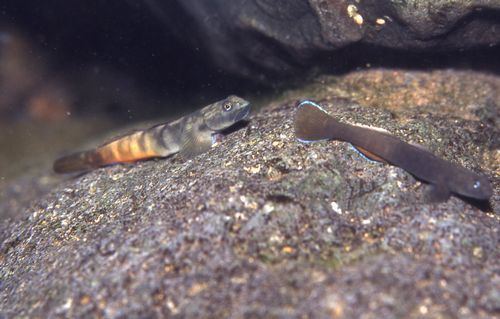Order Perciformes Subfamily Sicydiinae Rank Species | Phylum Chordata Family Gobiidae Genus Lentipes Higher classification Lentipes | |
 | ||
Similar Lentipes, Goby, Sicyopterus stimpsoni, Stenogobius hawaiiensis, Sicyopterus | ||
The Hawaiian freshwater goby, Lentipes concolor (‘o‘opu ‘alamo‘o or ‘o‘opu hi‘u koleis), is a species of goby endemic to Hawaii, where it occurs in mountain streams. Males of this species can reach a standard length of 7 cm (2.8 in), while females only reach 6 cm (2.4 in).
This species is important to the native people as a food fish. In Ancient Hawaiʻi, this species, and others such as mullet and Kuhlia sandvicensis, were cultivated in a form of freshwater aquaponics or aquatic polyculture. In this system of farming, the taro in the upland paddies (taro being the primary staple in Ancient Hawaiʻi) was aided by the fish such as the Hawaiʻian freshwater goby, through these fish pruning the leaves and eating the pests, thus leading to a symbiotic system of food production.
This species has a salmon-like lifestyle, spawning in fresh water and going out to sea to mature. L. concolor is notable for its unique method of returning to the spawning beds; they use suction disks on their ventral sides to climb the wet rocks behind waterfalls, even scaling the 422-ft-high Akaka Falls. [1]
